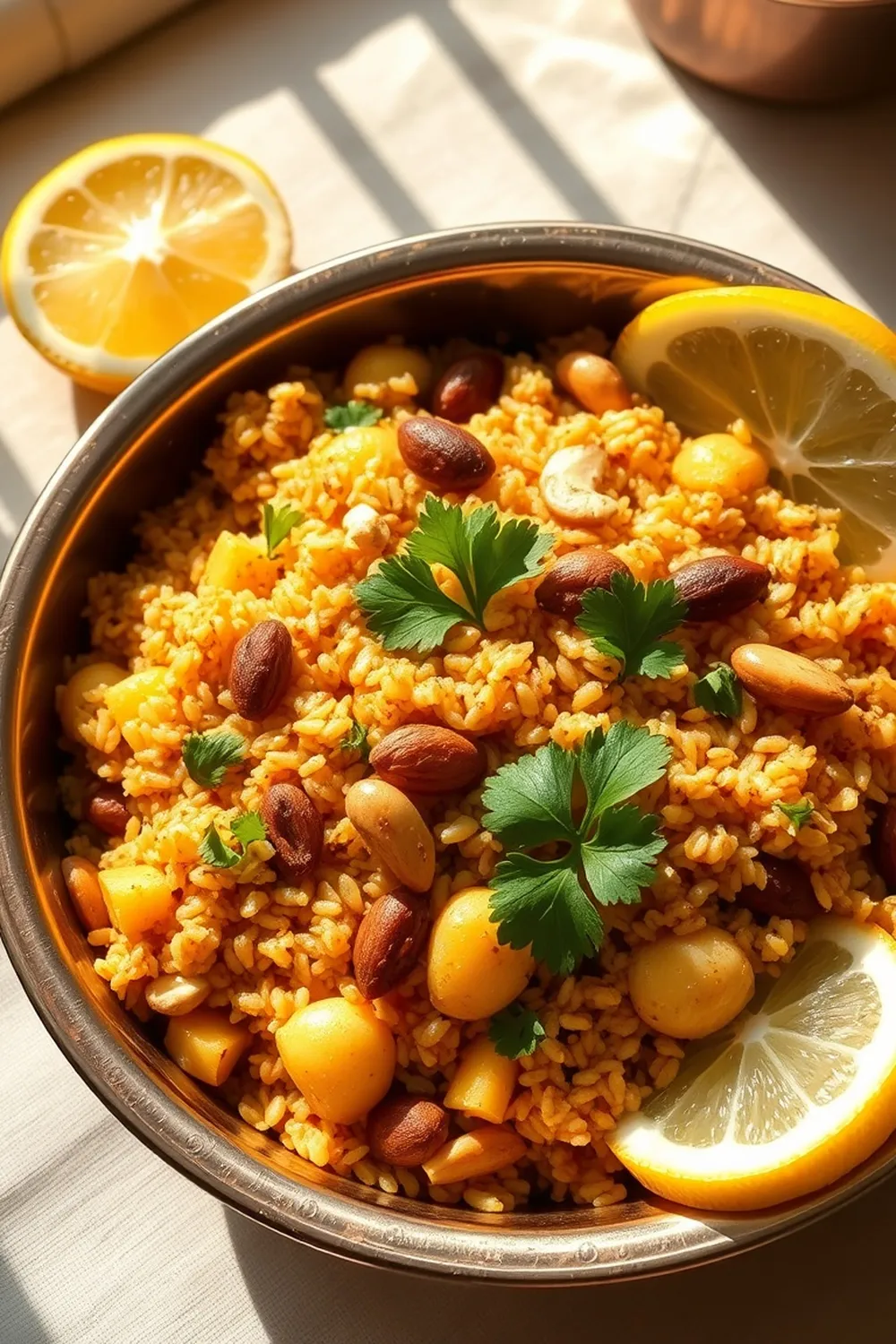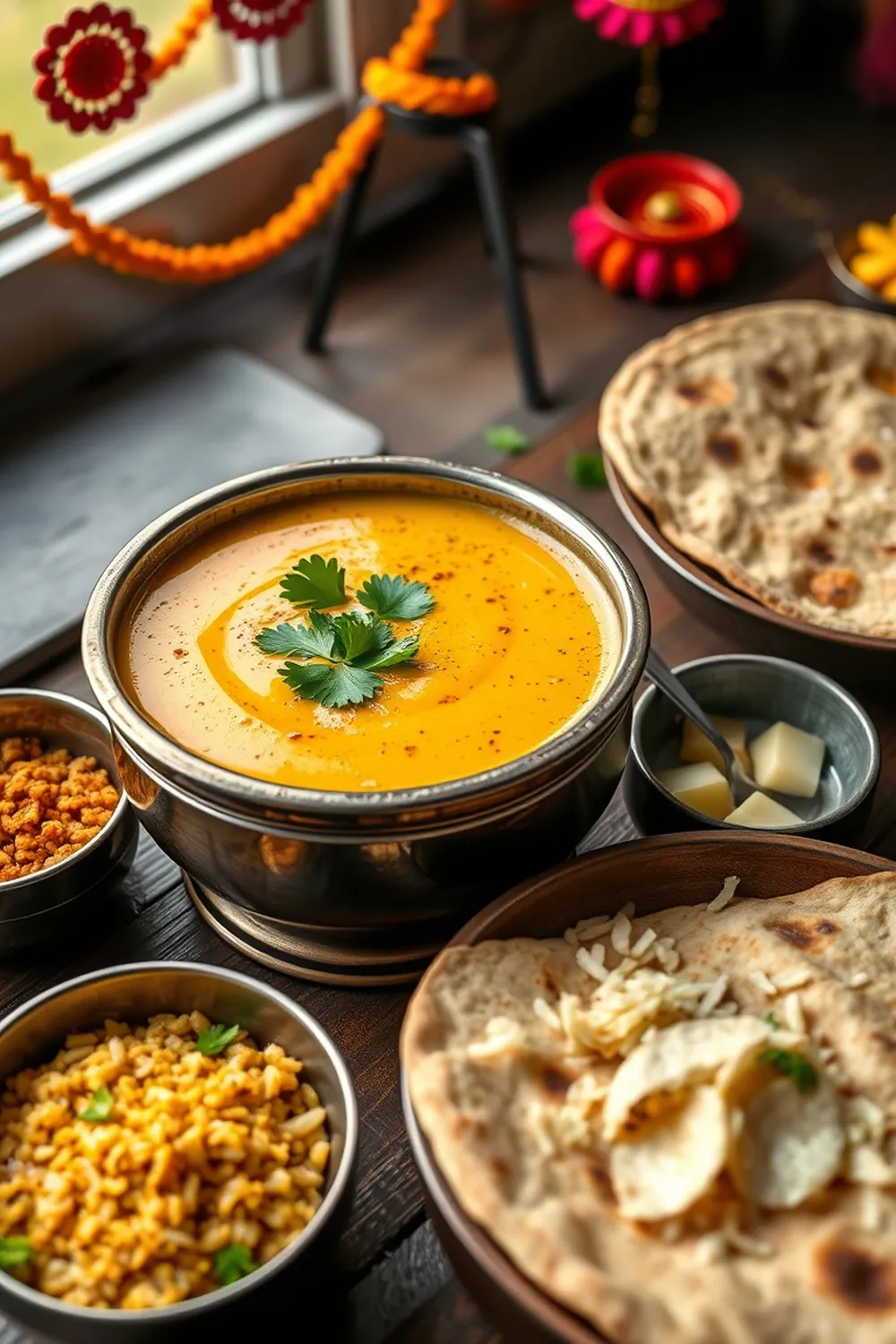- Soak jaggery in warm water, then simmer until thickened. Strain the syrup.
- Soak green gram (moong dal) overnight. Boil with salt until tender.
- Heat oil and temper with mustard seeds, urad dal, curry leaves, red chilies, and hing (asafoetida).
- Mix the cooked green gram with the tempering. Add jaggery syrup and grated coconut.
- Toss gently until well combined. Serve warm.
- Calories:365 kcal25%
- Energy:1527 kJ22%
- Protein:17 g28%
- Carbohydrates:62 mg40%
- Sugar:22 mg8%
- Salt:12 g25%
- Fat:6 g20%
Last Updated on 6 months ago by Neha Deshmukh
Green Gram Payasam Recipe – Jaggery & Coconut Sweet Delight
Hey everyone! Today, I’m sharing a recipe that’s close to my heart – Green Gram Payasam. It’s a classic Indian dessert, and honestly, it reminds me of festivals back home and my grandmother’s kitchen. This particular version, with jaggery and coconut, is my absolute favorite. It’s comforting, subtly sweet, and just… perfect. Let’s get cooking!
Why You’ll Love This Recipe
This Green Gram Payasam (also known as Moong Dal Payasam) is a delightful treat that’s surprisingly easy to make. It’s creamy, flavorful, and has a beautiful balance of sweetness from the jaggery and richness from the coconut. Plus, it’s a relatively quick dessert – perfect when you want something special without spending hours in the kitchen. You’ll love how the simple ingredients come together to create something truly magical.
Ingredients
Here’s what you’ll need to make this delicious payasam:
- 1 cup green gram (moong dal)
- ¼ cup powdered jaggery (approx. 60g)
- 4 tablespoons coconut, grated (approx. 40g)
- 2 teaspoons oil
- 1 teaspoon mustard seeds
- ½ teaspoon urad dal (split black lentils)
- A few curry leaves (about 10-12)
- 2 red chilies, dried
- 1 pinch hing (asafoetida)
Ingredient Notes
Let’s talk ingredients! A few things make this payasam special.
- Jaggery: I love using jaggery in this recipe. It gives a beautiful, earthy sweetness that sugar just can’t replicate. It also adds a lovely color. You can find it in most Indian grocery stores.
- Green Gram/Moong Dal: Make sure you use good quality green gram. It’s the star of the show! Split green gram cooks faster, but whole green gram works too – it will just take a little longer.
- Coconut: Freshly grated coconut is best, but unsweetened desiccated coconut works in a pinch. I always feel like fresh coconut adds a brighter flavor.
- Hing (Asafoetida): Don’t skip the hing! It might smell a little funky on its own, but it adds a wonderful savory depth to the payasam. It’s a staple in South Indian cooking. Different regions have different preferences – some add cardamom, others a touch of nutmeg. Feel free to experiment!
Step-By-Step Instructions
Alright, let’s make some payasam!
- First, soak the green gram overnight in plenty of water. This helps it cook faster and become nice and soft.
- The next day, drain the water and boil the green gram with a pinch of salt until it’s tender. It should be easily mashable.
- While the green gram is cooking, let’s make the jaggery syrup. Soak the powdered jaggery in about ½ cup of warm water. Then, simmer it gently until it thickens slightly. Strain the syrup to remove any impurities.
- Now for the tempering! Heat the oil in a small pan. Add the mustard seeds and let them splutter. Then, add the urad dal and fry until golden brown.
- Add the curry leaves and red chilies, frying for a few seconds until fragrant. Finally, add the hing and immediately remove the pan from the heat.
- Pour the tempering over the cooked green gram. Add the jaggery syrup and grated coconut.
- Gently toss everything together until well combined. Be careful not to break the green gram too much.
- Serve warm and enjoy!
Expert Tips
- Don’t overcook the green gram! You want it soft, but not mushy.
- Adjust the amount of jaggery to your liking. Some people prefer a sweeter payasam.
- Straining the jaggery syrup is important to remove any grit.
- A gentle hand when mixing is key to maintaining the texture.
Variations
This recipe is pretty versatile! Here are a few ideas to customize it:
- Vegan Adaptation: Use plant-based jaggery (check the source!) and a plant-based oil like coconut oil.
- Gluten-Free: This recipe is naturally gluten-free!
- Spice Level: If you like a little heat, add an extra red chili to the tempering. My friend, Priya, loves adding a tiny pinch of black pepper too!
- Festival Adaptations: During Onam, some families add a touch of cardamom. For Pongal, you might see a slightly thinner consistency.
Serving Suggestions
This payasam is wonderful on its own, but it’s also lovely served with a side of fruit or a sprinkle of chopped nuts. It’s a perfect ending to a South Indian meal, or a comforting treat any time of day.
Storage Instructions
Leftover payasam can be stored in an airtight container in the refrigerator for up to 3 days. It might thicken as it cools, so you can add a splash of milk or water when reheating.
FAQs
1. What is the best type of green gram to use for Payasam?
Split green gram (moong dal) cooks the fastest and gives a creamier texture, but whole green gram works well too.
2. Can I use sugar instead of jaggery? What adjustments should I make?
Yes, you can! Use about ¾ cup of sugar for every ¼ cup of jaggery. You might also want to add a tiny squeeze of lemon juice to balance the sweetness.
3. How can I achieve the perfect consistency for the Payasam?
The consistency should be creamy but not too thick. If it’s too thick, add a little warm milk or water. If it’s too thin, simmer for a few more minutes.
4. What is hing (asafoetida) and can I skip it?
Hing is a resin with a pungent smell that adds a savory depth to Indian dishes. While you can skip it, it really does enhance the flavor.
5. Can this Payasam be made ahead of time? How does it affect the taste?
Yes, you can make it a day ahead. The flavors actually meld together even more, making it even tastier! Just reheat gently before serving.










